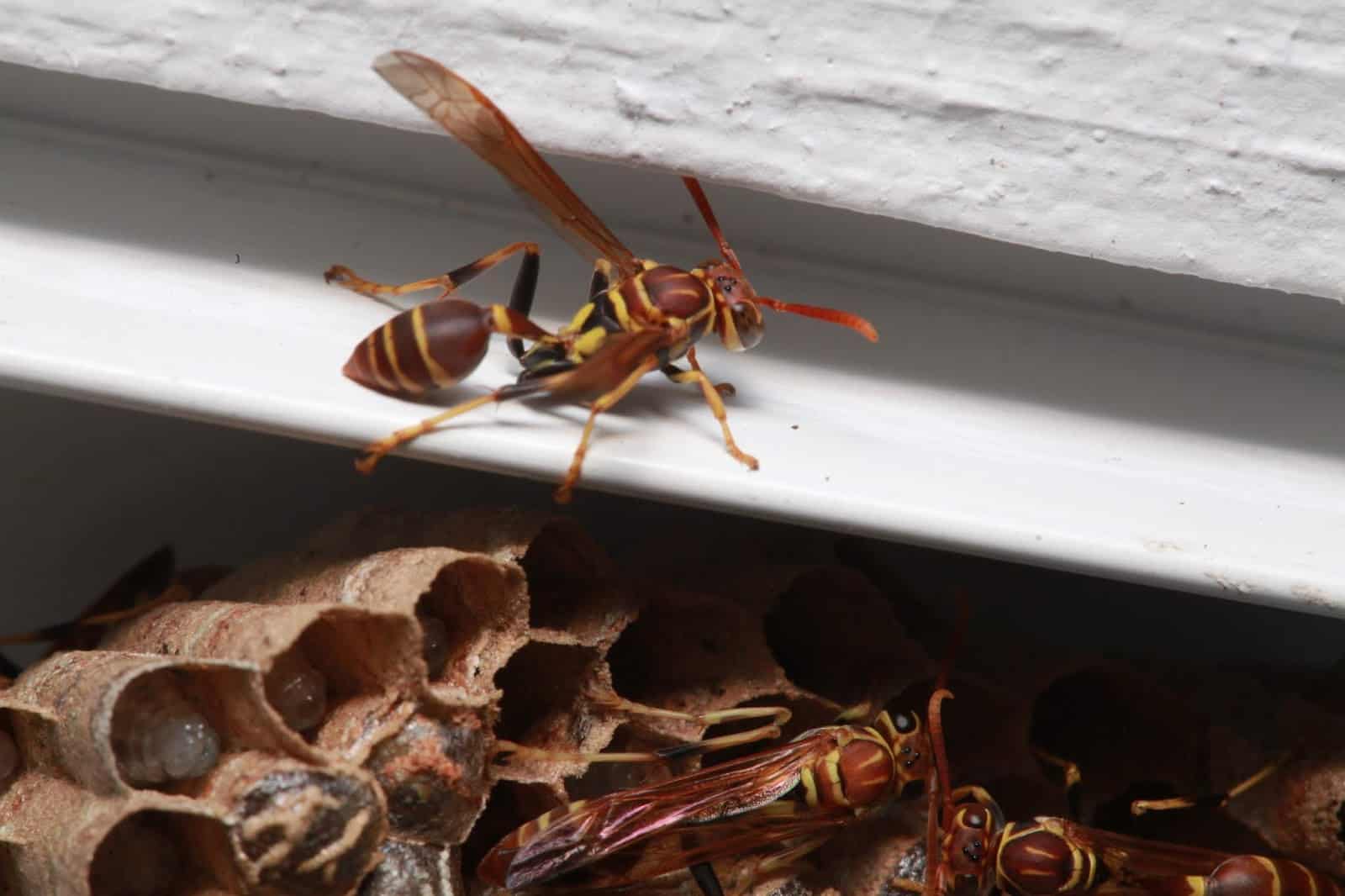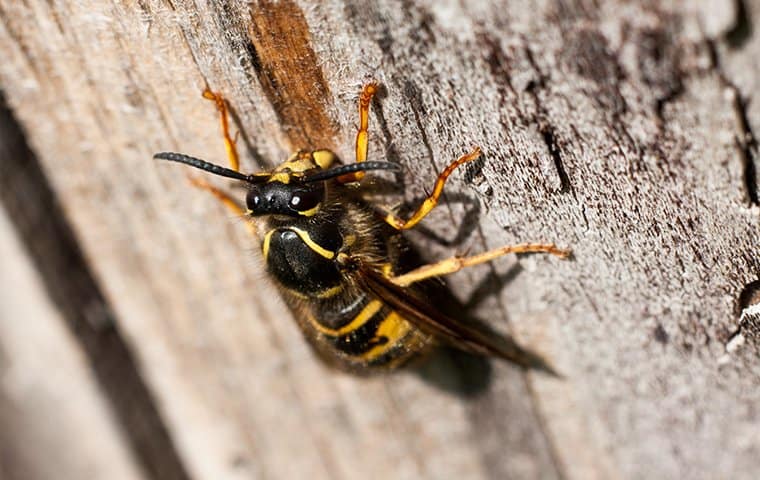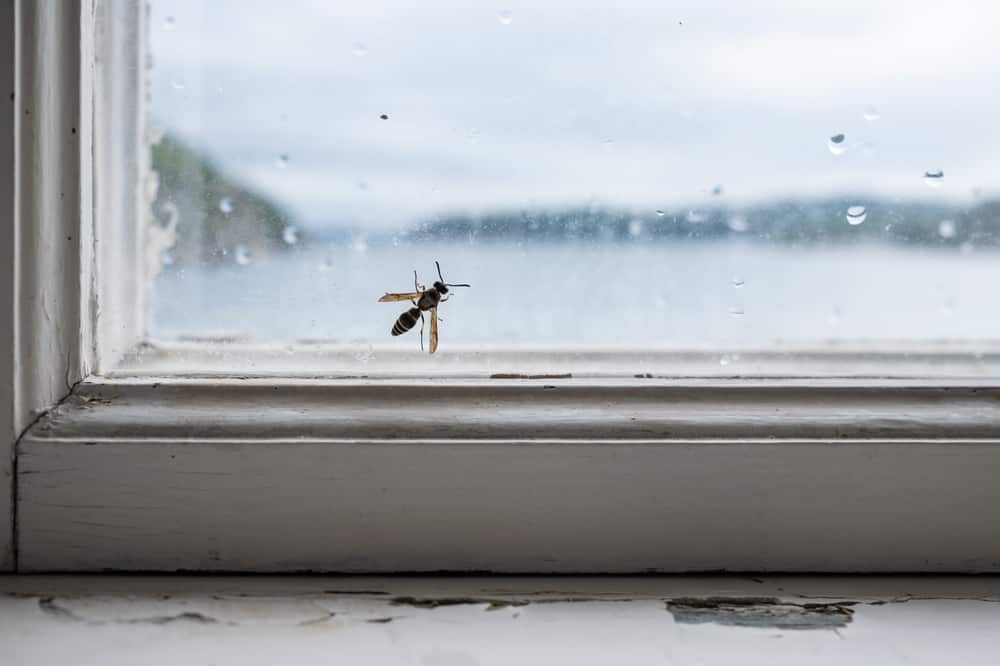Usually, you see wasps swarming around outside, and when they make it inside your home, they are found up high, flying above ceiling fans and bumping into windows, trying to get back outside!
So, finding wasps crawling on the ground appearing to be lethargic can leave you panicked and alarmed.
In this article, we talk all about lethargic wasps in the house, including why they are there and what you can do about it! Keep reading to find out more.
Why Do I Have Lethergic Wasps in My House?
Any kind of wasp activity in your home can be annoying, even if the wasp is lethargic and hardly able to move.
Here are the most common reasons why you may find lethargic wasps in your house!
1. The Weather Is Getting Cold
There are different types of wasps, but the species of wasp you are most likely to see in a lethargic state inside your home is the paper wasp.
Paper worker wasps and drones (male wasps) are not made to survive the harsh, cold temperatures of the winter. These wasps only exist the bring food back to the colony, take care of young wasps, and mate with the queens.
When the weather starts to turn cold during the fall months, these wasps abandon their colonies and will begin to die off partly due to the cold and partly due to starvation from a lack of other insects and nectar.
Some of these wasps will be attracted to the warmer weather inside of your home, searching for survival.
Although some of these wasps find a way to survive through the winter, most of them die.
2. You Have A Queen Wasp

Image Credit: Insects in the City
Female paper wasps that reproduce are known as queens. Queens mate with a male wasp in the fall and are equipped with natural antifreeze in their system, as well as extra fat so that they can hibernate through the winter.
In late fall, when other wasps and insects begin to die, queen wasps search for a warm place to hibernate.
Queen wasps remain in a dormant state during hibernation and reemerge when the weather warms up in the spring to build a nest and lay eggs.
However, milder winters and false springs pose a problem for queen wasps. While usually warmer temperatures mean it is time for the queen to leave her hibernation spot in search of a place to build a nest and lay eggs, warm winters and false springs play a trick on the queen wasp.
On a warm day, usually around 60 degrees, the queen wasp will begin to come out of hibernation. However, since the weather drops back down to cooler temperatures, the queen wasp must try to make its way back to hibernation, and they become lethargic in the process.
If they don’t make it back to their warm hibernation spot soon enough, they will die.
3. You Have A Wasp Nest In Or Near Your Home
You probably don’t want to hear this, but if you are finding more than a few lethargic wasps inside your home, you may have a wasp nest somewhere in your home.
Wasps make their nests out of wood they have chewed and turned into a paper-like substance. They build these nests in overhead beams and structures in places like your garage, eaves, barn, porch, attic, or any other places that are high up and have a little nook or corner.
They can also build their nests inside your walls! Eek!
It is likely that these wasps are beginning to starve, which is why they are lethargic. If the nest is in your garage, attic, or inside your walls, the insects have enough warmth to survive longer into the winter months than other wasps. However, their food supply is still limited.
What To Do When You Find Lathargic Wasps In Your House
So, now you know why you found a lethargic wasp or waps in your home, but what do you do now?
You need to get rid of the wasp ASAP because even though they are lethargic, they can still sting you!
Here are a few different methods of getting rid of wasps inside your home.
1. Catch And Release
If you don’t want to kill the wasp and want to set it free or hold onto it for observation, there are a couple of ways you can catch it.
The first way is to use a glass cup and a thin piece of cardboard. Cover the wasp with the glass cup, then gently slide the piece of cardboard between the wasp and the surface it is on, forcing it into the glass.
Be sure you keep the cardboard over the glass until you get the wasp outside or into whatever insect cage you are using.
You can also use a device called a Bugzooka made specifically for picking up insects that may bite or sting you and placing the somewhere else safely.
Please note if it is extremely cold outside, setting the wasp free will only cause it to suffer more. If you want to hold onto the wasp to observe, be sure you have the right equipment to contain the wasp while giving it warmth, food, and protein it needs for survival.
2. Kill The Wasp

Image Credit: Neighborly Pest Management
If you don’t want to catch and release, a good old-fashioned fly swatter will work as well. These are pretty straightforward. Just aim for the wasp and quickly swat it to kill it.
Alternatively, you can use wasp spray. Just spray a small amount on the wasp, and it will kill it almost instantly. Wasp spray is also the best solution for eliminating a nest. However, if you are planning to spray a wasp nest, you need to ensure it is a wasp nest and not a honeybee hive.
Honeybees are an endangered species and an important part of our ecosystem. Bees’ nests have a hexagon shape as opposed to a wasp nest which is circular like a disc.
Once you have identified the wasp nest, you can spray it to eliminate the waps. Be sure to spray in a well-ventilated area and wear a mask.
After you have killed the wasps, make sure you vacuum it up because its stinger can still sting you if you touch it. If you don’t have access to a vacuum, make sure you wad up toilet tissue or paper towels enough that the stinger won’t be able to make contact with your skin.
3. Call Pest Control
If you have a wasp nest and don’t want to deal with it yourself, or If you are dealing with a large wasp infestation, it may be best to call a professional exterminator. for wasp nest removal.
This is also the best strategy if you are highly allergic to wasps. While some people get stung by a wasp and only suffer through a bit of redness and swelling, some people experience pancake size welts, shortness of breath, and even death!
If you know you have a deadly allergy to wasps, you should never attempt to eliminate a wasp nest. It is best to leave it to the professionals.
Conclusion
There are a few different reasons why you are finding lethargic wasps in your home. While a few lethargic wasps here and there are not concerning, finding a lot of wasps could be a sign of an infestation.
Wasps in your home should be taken care of immediately, even if they are in a lethargic state, as their stingers are still active even after they die! You can eliminate wasp nests with wasp spray.
However, if you have too many wasps to deal with alone or you are allergic to wasps, you should call a professional to take care of the issue and remove the nest from your home.
Have you seen a lethargic wasp in your home? How did you address the problem? We would love you to tell us about it in the comment section below! We hope you enjoyed this article! Thank you for reading.
